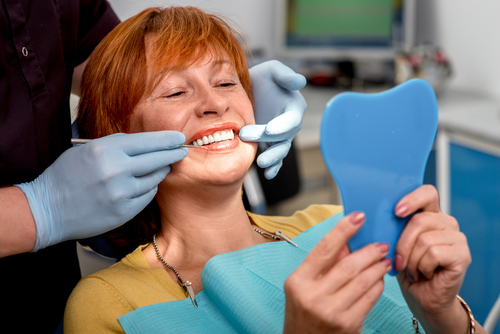People say “time is money,” but let’s be real—it’s also energy, patience, and sanity. We trade time for convenience every day, whether it’s paying extra for express shipping, ordering takeout instead of cooking, or using a GPS to avoid traffic. Why? Because we know that saving time means less hassle and faster results. The same idea applies to your dental care. Traditional implants can stretch out over months, with multiple appointments, healing periods, and plenty of waiting—not to mention the higher cost that comes with the extra time and procedures. On the other hand, mini dental implants offer efficient results at a more affordable price. Fewer visits, less recovery time, and an affordable price point make them a smart investment in your time and budget. You get the smile you want without the long, drawn-out process or the hefty bill.
The Price of Tooth Loss and How Mini Dental Implants Help
It’s easy to think that one missing tooth isn’t a big deal. You tell yourself that it can wait, or that a traditional tooth replacement will suffice. But beneath the surface, a series of changes begins the moment you lose a tooth. These changes affect not only your smile but also your entire body. Consider this: when a single tooth aches, it can be all-consuming. Eating becomes a challenge, focus disappears, and the pain radiates beyond your mouth. If a damaged tooth can cause that much disruption, imagine what happens when it’s gone altogether. The issue doesn’t disappear—it just changes form, setting off a series of changes that impact your oral and overall health.
The Jawbone’s Response To Tooth Loss
Once a tooth is missing, the surrounding bone undergoes a process called alveolar bone resorption. This change occurs because the jawbone relies on teeth for stimulation. Every time you bite and chew, your tooth roots send signals to the bone, keeping it strong and healthy. But without that stimulation, the bone starts to shrink. Recognizing that the area no longer serves its original function, the body begins to break down and reabsorb the bone tissue. Over time, this leads to disuse atrophy, where the jawbone weakens and loses density, potentially altering your facial structure. A sunken, aged appearance can develop, and the stability of surrounding teeth is compromised, increasing the risk of further tooth loss.
Thankfully, this process can be stopped. Dr. Apel places a dental implant directly into the bone, where it fuses with the surrounding tissue and functions as a new tooth root. This integration, known as osseointegration, allows the implant to restore the essential stimulation that the jawbone needs. With each bite and chew, the mini implant helps keep the bone active, preventing further deterioration and preserving the natural structure of your face. Instead of allowing missing teeth to trigger a cycle of bone loss, mini dental implants offer a proactive, long-term solution that supports your smile and overall health.
The Price of Mini Dental Implants vs. Traditional Implants
If the cost of tooth replacement concerns you, it’s important to know mini dental implants typically cost less than traditional implants. Many patients find that their final cost is significantly lower, sometimes by as much as 50%. But why is there such a big difference? The answer comes down to size, procedure, and efficiency.
Size and Complexity
Traditional implants are larger, typically about 5 millimeters in diameter. Because of their size, they require more bone for support. If a patient doesn’t have enough bone, a bone graft may be necessary—adding time and expense. The procedure to place traditional implants is also more invasive, often requiring multiple surgeries and months of healing before the final restoration can be attached.
Mini dental implants, on the other hand, are less than 3 millimeters in diameter. Their smaller size eliminates the need for extensive bone support, which means bone grafts are rarely needed. Placement is minimally invasive, often done in a single visit with a much shorter healing time. This streamlined process reduces surgical costs and recovery time, making mini implants a more affordable option.
Fewer Components, Lower Costs
Traditional implants consist of multiple pieces—a separate implant post, an abutment, and the final restoration. Each component requires additional materials, manufacturing, and placement steps, all adding to the overall cost. Mini implants, however, are a single titanium post that serves as both the implant and the attachment for the final tooth. Fewer parts mean fewer expenses, a faster procedure, and less time in the dental chair.
Learn More About the Price of Mini Dental Implants
Mini dental implants offer a cost-effective, long-term solution that restores function and preserves bone health, all while being more affordable and less invasive than traditional implants. If you’ve been putting off treatment because of concerns about cost or time, now is the perfect moment to explore your options. Contact us today to book a free consultation.
Follow us on Instagram and Facebook for the latest updates and information on mini dental implant solutions!

